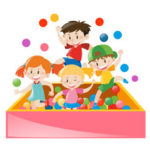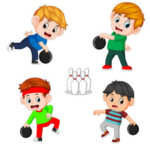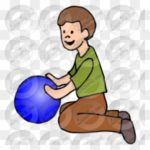
by Neetu | Jun 25, 2020 | Fitness Activity
Purpose of Activity
This activity will give children the opportunity to practice the skill of throwing overhand. At this developmental age, children should focus on throwing hard at the target. This will enable children to go through the full range of the throwing motion and assist them in “stepping with the opposite foot” when they throw. Stepping with the opposite foot when throwing is an important part of demonstrating a mature throwing pattern.
Equipment Required
A yarn ball, Koosh, or beanbag is most appropriate for this activity inside, a plastic ball, or a tennis ball outside. Make sure the ball or beanbag is the size that will easily fit into the child’s hand. Beanbags or yarn balls are best if inside a building as they will not roll away from the children. A small plastic ball can be used outside in a grassy area where there is less chance for the ball to roll away from the child.
Description
Conduct this activity in a large indoor open space such as a gym or multipurpose room where there is a large wall (free of obstacles) to throw at or a large open outdoor space. Ask children to pick up a beanbag and place it in the hand they are going to use to throw (this should be the same hand they write with). “Bend your elbow up and hold the beanbag behind your head, step forward with the opposite foot, and throw the beanbag as hard as you can.” If inside children should be directed to throw hard at the wall. If outside, ask that they throw as far (or hard) as they can into the open field. Teachers may want to place cones or markers in the field so that children have a large target to throw toward. Remember to stress the cues “throw hard” and “step with the opposite foot.” The throwing skills of young children will vary greatly. Some children may want to get close to the wall while others will need the challenge of being farther away. While this activity seems very simple it is an important foundational first step activity for young children learning how to throw.
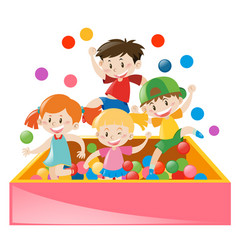
Note: If children are having trouble stepping forward when they throw, place a tape line, jump rope, or chalk line on the ground and ask that children step over the line when they throw. This will help them begin to develop the opposite foot stepping pattern.
Variations:
As children get the basic concept of throwing hard while stepping with the opposite foot use targets to challenge them to keep practicing. Use large targets indoors such as painting a target on a large sheet and then attaching to the wall. Outdoors, Provide a restraining line for children to stand behind and ask that they throw over another line that is 20 to 30 feet away. Provide a line that is closer to those that cannot throw as far.
Teaching Suggestions:
With young children, it is important to participate in throwing activities that are both fun and success-oriented. Research tells us that children need to be successful about 80% of the time to stay on task, to avoid frustration, and to have the best opportunity to develop skills. Children, who consistently miss the target when they throw, may get frustrated and not practice. Throwing activities must be success-oriented in order that children will have the opportunity to develop the skill. The best beginning throwing activity is to simply ask children to throw hard. This allows children to naturally step with their opposite foot when throwing and assists in the development of a mature throwing pattern.
Adaptations for Students with Disabilities:
Many children with special needs may not be able to step when throwing. Ask these children to throw as hard as they can and make sure they have the opportunity to stand as close to the wall or target as needed.
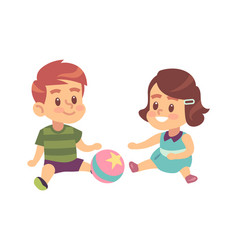
by Neetu | Jun 25, 2020 | Fitness Activity
Activity
Let the child sit in their personal space.
Give the foam ball each to the kids.
Tell them to keep the ball on their lap when they are sitting down.
Exploration 1: –
Explain the shape of the ball and let them feel it.
Explain to them also the color of the ball.
You can ask them which fruits resemble the shape of the ball?
Exploration 2: –
Ask the kids to place the ball in various directions and levels
- placed it above your head
- Placed it over the knees
- Placed on the right side of the body
- Placed it on the left side of the body.
Exploration 3: –
- Ask the kids to roll the ball around their home base.
- Ask the kids to leave their home base rolling the ball in the general space.
Exploration 4: –
- Let the kids face each other and roll.
- Ask the kids to roll the ball to their partners.
Debriefing: –
Ask about what we have done today.
Put music and do a mild stretching.
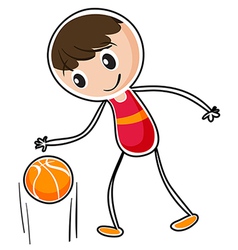
by Neetu | Jun 25, 2020 | Fitness Activity
Aim
To practice hand dribbling skills and to build cooperative strategy skills.
Some ball control ability to dribble with one hand or bounce with two hands.
Equipment Require
Intermediate sized basketballs (or rubber ball that bounces) for every team of students; 1-2 foam building blocks or 1-2 various pieces of equipment (e.g. Frisbees, poly spots, foam noodles, foam dice, foam sticks, foam paddles, etc) for each student.
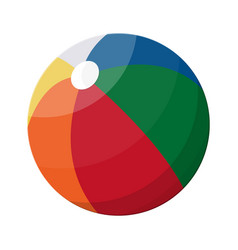

Description
Designate areas for teams to build their own structures or artworks (inside a hula hoop or inside a 2 jump ropes, etc).
Have students gather in small groups of 4-6 in their designated building area of the gym. Place foam building blocks in buckets or hula hoops in the center of the gym. Alternatively, place various pieces of gym equipment in the center.
Have each team select the type of ball they prefer to dribble by hand. On the teachers signal to begin, 1 member of each team dribbles to the center of the gym to pick up a foam building block or piece of gym equipment. The student continues dribbling with the block/piece back to the team’s designated area of the gym. The other students are practicing dribbling in place while waiting for other dribblers to return.
Each team chooses 1) what they would like to build, 2) what pieces they will need and 3) who they will send to get them.
While the students are dribbling to gather building materials the teacher can observe students’ abilities to dribble and how fairly the students cooperate in each team. The building concludes with teachers’ timed signals.
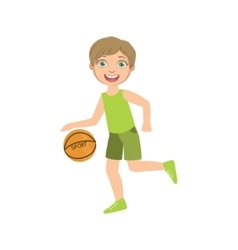
by Neetu | Jun 25, 2020 | Fitness Activity
Aim
To practice the proper hand dribbling technique while stationary and while moving around the gym.
Equipment Require
Hula hoop for every student, 15-20 poly spots, and a playground ball for every student.
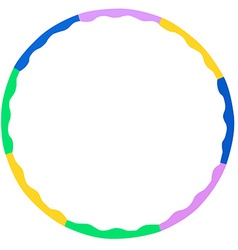
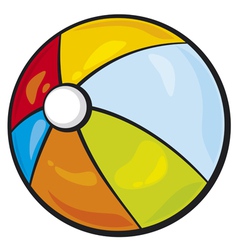
Description
Each student will have a hula hoop scattered around the gym. The hula hoops are the “Lilly Pad” for the frog and will be the starting and transition point for the game. There will also be poly spots scattered around the gym. Make sure to have one for each student. The poly spots will be used as “flies” to “feed the frogs.”
Upon the teacher’s direction, have the students dribble inside their “Lilly Pad” to start. Then the teacher calls out “frogs, its feeding time!” Then the students dribble around and try to dribble on as many “flies” as they can in an allotted time usually 2-3 minutes. Then the teacher calls out “Frogs, Find a new Lilly Pad” at which point the students dribble and stand in a different hula hoop. The game then repeats at having the students dribble inside their hula hoops.
Make sure you are helping the students by watching and giving feedback about their dribbling skills.
Variations:
Have the student high five or wave to their frog friends as they dribble on flies.
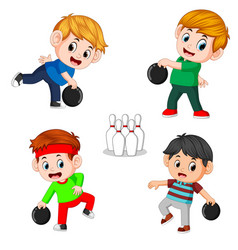
by Neetu | Jun 24, 2020 | Manthan
Aim
To have students practice the underhand motion of bowling.
Activity cues: “Reach back”, “Arm close to the side of body”, “Step with the opposite foot”
Equipment Require
Plastic 16-20 oz. bottles or bowling pins, Small foam balls, Poly spots
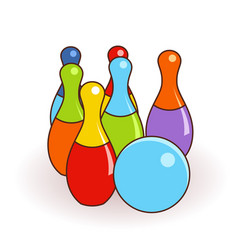
Description
Young children get excited about knocking bowling pins over with a ball. They have very little concern about scoring or other competitive aspects of the formal game. Here are ways to present the activity and two ways to organize the pin set-up.
- Related to both pin setup and presentation
In a traditional sense, the teacher can show children how to set up pins in a conventional manner. Ask them to count the number of pins in each row. First row “1,” second row “1, 2,” third row “1, 2, 3,” and fourth row “1, 2, 3, 4”; then confirm that there is a total of ten pins by counting them all. This integrates numeric concepts into the p.e. activity. If the teacher has placed small round stickers on the floor, younger students will have an easier time putting pins in the same arrangement each time.
In order to maximize participation, this would need to be presented in the context of a number of throwing stations. Otherwise, the teacher would need a lot of pins and balls to keep the group size small.
- Pin setup
As an alternative, ask students to design their own pin arrangements and see how the different arrangements affect the way the pins fall.
- Presentation
It is preferable that students work in small groups in order to maximize participation. For example, there might be one student bowling while one or two others set up the pins. Students rotate positions. Since the emphasis is on the underhand throw, (as opposed to the number of pins knocked down), the teacher might use less than ten pins in order to accommodate multiple stations. Very young children will perceive a challenge when throwing at maybe 3 pins from an appropriate distance (appropriate distance maybe 5-7 giant steps away from the roller of the ball and it should not be a regulation size bowling alley length). And, preschoolers can still experiment with various pin arrangements even with only three pins.
For either presentation, each time the students set up their pins, they should return to a poly spot on the floor to make their underhand throw. Initially, the teacher should place more emphasis on the arm swing than other aspects of the throw. The arm swing should begin with a “reach back”, swing forward “close to the body”, and release the ball at a low level (“no bounce”) (remembering to give only one cue at a time). “Step with the opposite foot” may be an appropriate cue only for students who are more developmentally advanced.
Teaching Suggestions:
- For students that easily knock down their pins, challenge them to move their spot back a step after each successful underhand throw.













